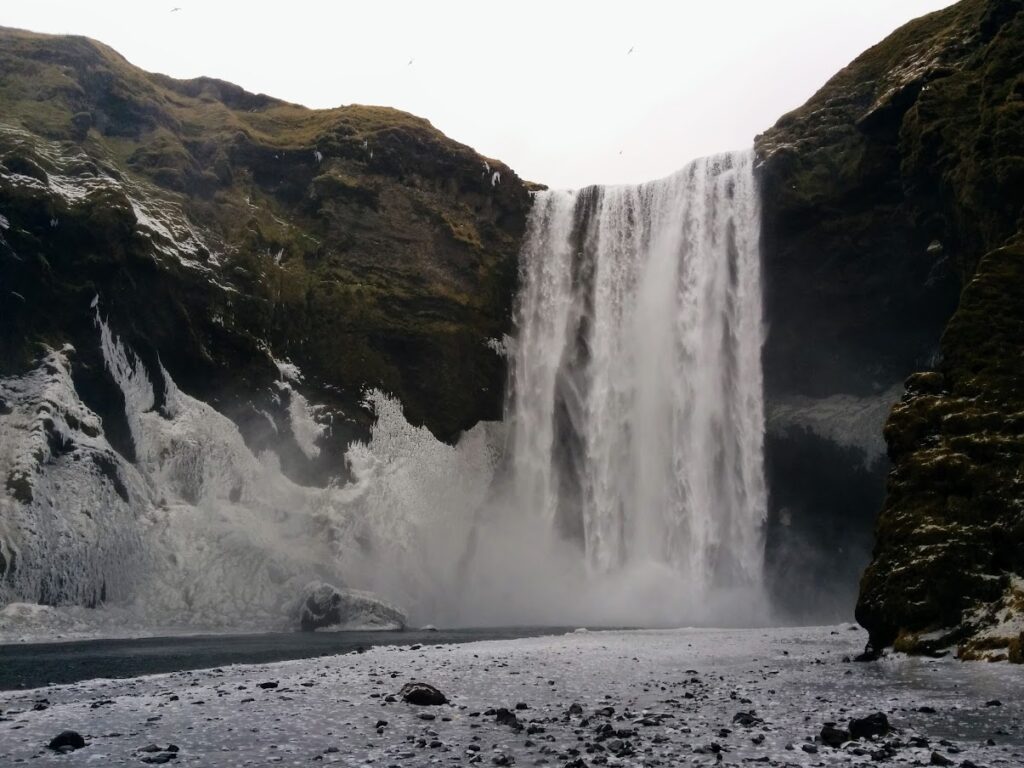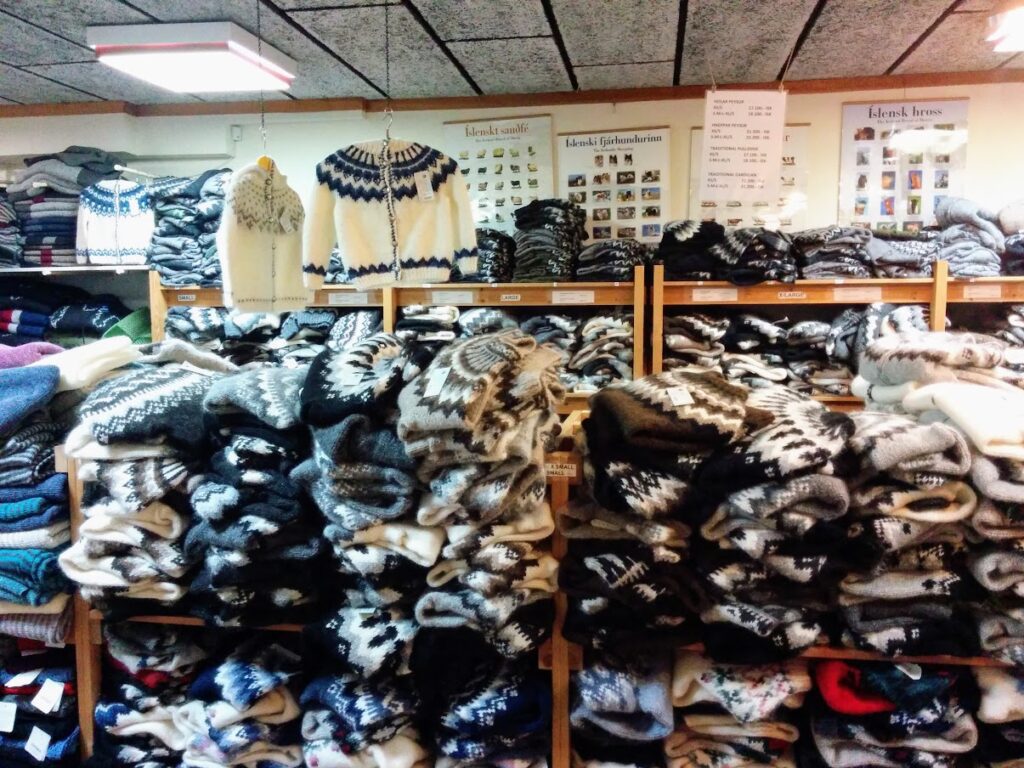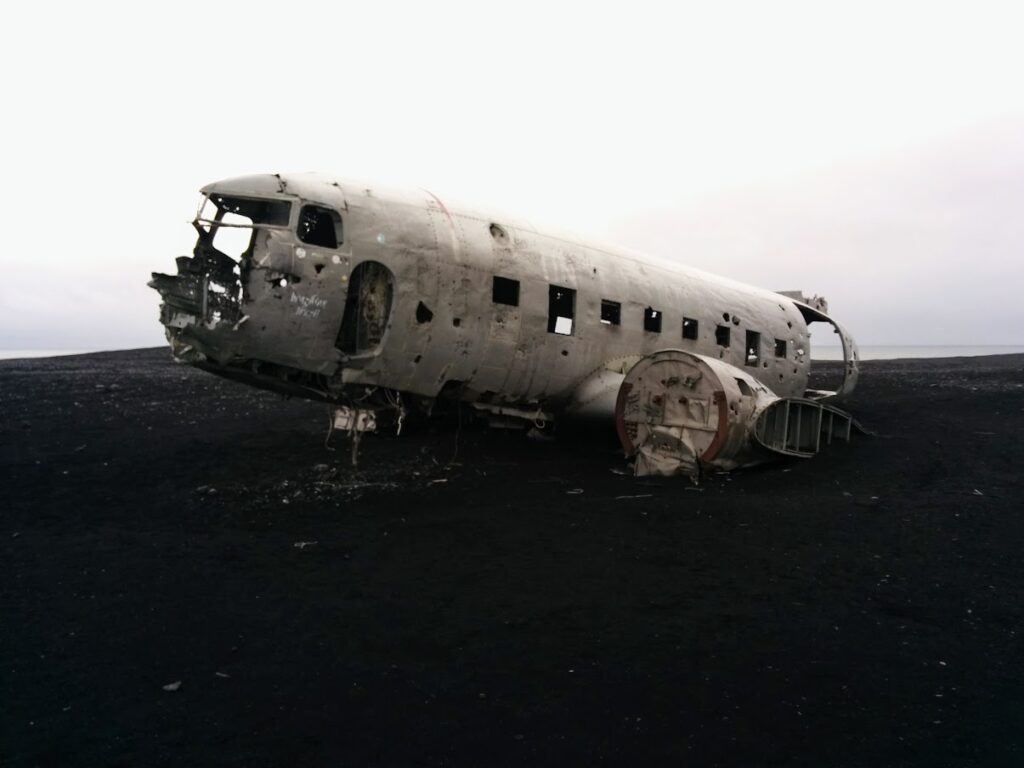First time in Iceland and looking for your bucket list of things to do in Iceland? You’ve come to the right place!
Iceland is well-known as the land of fire and ice, By exploring the south of the country, you can experience all of this and so much more!
From dramatic mountains and rugged cliffs, to huge erupting geysers, thundering waterfalls, and (depending on the time year) the opportunity to see the famous Northern Lights shimmer above you. Iceland has it all, and you won’t want to miss any of it. Here are our top 10 bucket list things to do in Iceland!

1. Explore Reykjavik
Most visitors stay in Reykjavik during their time in Iceland. But even if you’re staying further away, Reykjavik is definitely a must visit. Reykjavik (“Bay of Smokes”) was founded in 874, originally as a small fishing village. Since then, it has evolved into Iceland’s capital, becoming one of Europe’s most captivating cities. Reykjavik has so much offer. As you explore the city make sure you visit:
Hallgrimskirkja – at 73 meters high, it is the largest church in Iceland and provides beautiful 360° views from its viewing platform at the top. Views span across Reykjavik city and the nearby mountains, including Esja, Reykjavik’s landmark mountain, and out to the ocean looking towards Greenland.
Sun Voyager – this modern metal structure can be found by the shoreline looking towards Esja. It was created to celebrate the city’s 200th birthday and represents hope, progress and freedom.
Harpa Concert Hall – this impressive concert hall and conference centre is home to the Iceland Symphony Orchestra, The Icelandic Opera and the Reykjavik Big Band. Harpa is a state of the art conference centre with a number of awards to its name for its architecture. Whether you see a performance at Harpa or not, the building is 100% worth a visit and an explore.
Laugavegur – perhaps one of Reykjavik’s oldest streets, this is a bustling hub, home to lots of cafes, shops, restaurants and bars – enjoy!
This really is just the tip of the iceberg and Reykjavik has so much to offer. We have written a more in-depth trip report of our 7 days in Iceland, including what we got up to in Reykjavik here.

2. The Golden Circle
The top of many people’s bucket list things to do in Iceland – the Golden Circle is the most popular scenic route in Iceland. This is a fantastic introduction to the country and 3 of its natural wonders. This includes, Pingvellir National Park, Geysir geothermal area, and Gullfoss Waterfall – but you’ll see there is so much more to see beyond these 3 main attractions.
The Golden Circle can either be done via an organised tour (there are dozens of tour companies to pick from), or you can hire a car and organise your own self-drive tour. If helpful, we have written a full outline of what you can expect from the Golden Circle here.
However you choose to do the Golden Circle – whether a DIY tour or through an organised group – you are guaranteed an action-packed day! Iceland truly is a stunning one-of-a-kind country. Steeped in history, there’s no better way to introduce yourself to all that Iceland has to offer than by doing the Golden Circle Tour.

3. Witness Skogafoss & Seljalandsfoss Waterfalls
Located in Southern Iceland, along Route 1 are the stunning Skogafoss and Seljalandsfoss waterfalls.
Standing at 25 meters wide and a drop of 60 meters, Skogafoss is one of Iceland’s biggest and most beautiful waterfalls. It’s also clearly visible from Route 1, making it easy to reach if you’re doing a DIY self-tour of Iceland. Alternatively, there are plenty of organised day tours who visit both Skogafoss and Seljalandsfoss.
There are multiple viewpoints to admire Skogafoss’ impressive cascade. Directly in front of the waterfall, the land is completely flat, meaning you can walk right up to the waterfall itself (expect to get soaked in the summer!) Unfortunately, due to the huge amount of spray that the cascade produces, it’s unlikely you’ll get too close during the winter as the ground becomes a bit of an ice rink! There is also a staircase which climbs alongside the waterfall, up to a viewing deck, where you can look down and admire the waterfall from a different angle.
Further up the road towards Reykjvik is Seljalandsfoss, a stunning 60 meter drop waterfall. What’s different about Seljalandsfoss is that there’s a pathway directly behind it. You can completely encircle the waterfall (weather dependent), making it one of Iceland’s most photographed spots.

4. Explore Iceland’s Geothermal areas
You can’t visit Iceland without visiting some form of its geothermal activity. Two areas we particularly enjoyed visiting were Gunnuhver and Krysuvik, located about 40 minutes apart.
Gunnuhver is in the southwest part of the Reykjanes Peninsula. This a highly volcanic region of Iceland, due to its proximity to the Mid-Atlantic Rift. A bit off the beaten track, Gunnuhver is an active and incredibly impressive geothermal field. While further up the road and slightly more well-known is Krysuvik. Both are filled with various bubbling, steamy (and eggy smelling) mud pools. But don’t let the sulphur smells put you off! Experiencing the earth literally bubbling around you at hundreds of degrees is quite a sight to behold! There are wooden walkways and viewing platforms where you can look out at the bubbling pools around you.

5. Buy some genuine Icelandic knitwear
Also unique to Iceland are its iconic Icelandic jumpers – or lopapeysa. These jumpers are made from 100% unspun Icelandic sheep’s wool. They’re incredibly warm, with high insulating properties – perfect if you’re visiting Iceland during the winter time.
You will find plenty of jumpers for sale in stores around Iceland in the style of a classic lopapeysa. However these tend to be made in China and are not from genuine Icelandic sheep’s wool.
A genuine lopapeysa is the perfect souvenir from your time in Iceland. We purchased ours from the Hand Knitting Association in Reykjavik. This small store is filled to the brim with handknitted jumpers of varying sizes, colours and styles – you will be spoilt for choice! It’s worth noting although a unique and iconic souvenir, these jumpers are far from cheap. Due to the high quality material and time taken to hand knit though, you will not be disappointed!
If a jumper isn’t tickling your fancy, they also make lots of other items, from blankets and gloves, to hats. We also purchased a puffin blanket which we love!

6. Explore Iceland’s Black Sand Beaches
It may not have the golden sandy shores we’re accustomed to when we think of holiday beaches, but Reynisfjara is Iceland’s world famous black sand beach. It has recently been listed as one of the world’s most beautiful beaches – and for good reason too.
Iceland is home to 130 volcanoes! Many of these are still active today, including Katla, a volcano which has been dormant for 100+ years but is expected to soon erupt again. Reynisfjara was formed from a major eruption from Katla, spewing ash and lava for miles around.
Located just off the Ring Road, the beach is dramatic and feels cinematic with its dark, moody shoreline contrasting with the foamy white waves of the Atlantic ocean. While there are many volcanic beaches around the world, none are as unique as Reynisfjara. The beach stretches from Dyrhólaey, the southern most point in Iceland, all the way to Vik, a remote seafront village also worth visiting if you’re in the area.
Reynisfjara is also home to its iconic sea stacks. According to Icelandic folklore, these sea stacks were once trolls, trying to drag a ship to shore. However they didn’t realise the sun was rising and they turned to stone as soon as the sun touched them.
It’s worth spending a whole day to truly enjoy the area, especially if you add a visit to Vik, but for an experience truly unique to Iceland, it’s well worth it in our opinion.

7. Have a soak in Iceland’s geothermal pools
Iceland sits across the Mid-Atlantic Ridge, a volcanic mountain range, generating over 120 geothermally-heated pools and springs across Iceland. Depending where you’re travelling in Iceland, there are plenty to choose from – from natural springs, to public swimming baths. Two of the most popular that you’re likely to come across is the Blue Lagoon and the Secret Lagoon.
Located between Reykjavik and Keflavik Airport, The Blue Lagoon is Iceland’s most famous and iconic public swimming pool. While it’s the most tourist-heavy geothermal pool, it is still a bucket list item for many first timers in the country. Formed in the middle of a lava field, the complex is famed for its milky blue waters, and facilities which also include a spa and in-water massages.
We personally would say there are other much nicer pools you can visit and experience in Iceland. We visited during a snowy November and found the water to be lukewarm at best.
In favour of The Blue Lagoon, we’d recommend a visit to the Secret Lagoon. This is one of Iceland’s most popular hot springs, but not as touristy or as developed as The Blue Lagoon. Constructed in 1891, The Secret Lagoon is the oldest man-made pool in Iceland, and still captures that “rough around the edges” appeal. It feels more natural than The Blue Lagoon, with only a small cafe on-site and changing facilities. The water is also perfect bathing temperature. A small geyser erupts every few minutes like clockwork, injecting more hot water into the pool.
These are just 2 suggestions, but there are so many more geothermal pools and springs to explore across Iceland. Whichever ones you choose, it’s the perfect way to relax, unwind and enjoy the natural surroundings.

8. Hunt for the Northern Lights
Whatever time of year you visit, Iceland has something for everyone. History, culture, stunning scenery, dramatic landscapes and vibrant wildlife. But one thing Iceland is particularly well-known for if you visit during the darker months of October to March, is the chance to witness the Northern Lights.
The opportunity to see these stunning displays is a once-in-a-lifetime opportunity for many. The lights are unpredictable and rely on near-perfect conditions to be seen, and of course nature offers no guarantees. However the pay off of witnessing the lights with your own eyes makes all the hard work and late nights worthwhile.
There are many companies in Iceland who go hunting for the lights and some will even re-book you free of charge if you’re unsuccessful on your first attempt. Alternatively you can self-drive and go looking for the lights yourself.
If of interest, we have written a post about our own self-drive Northern Lights hunting experience, including driving through an insane blizzard to get to our ideal location.

9. Eat at a geothermally powered restaurant
Something you don’t see everyday. A tomato greenhouse with an on-site restaurant, all 100% powered by natural geothermal activity.
The restaurant serve all kinds of delicious tomato-based drinks and meals – from beers and Bloody Mary’s, to wholesome pasta dishes and the finest homemade tomato soup I think I’ve ever tasted. You can dine at tables located within the greenhouse and admire their towering tomato plants while you eat.
Friðheimar is located just off the main Golden Circle route, so it’s worth a visit for a nice hearty lunch if you’re doing a self-drive tour. If you’re interested in knowing a little more, we have included a more detailed write-up on our post about doing a self-drive Golden Circle Tour here.

10. Visit the DC3 Plane Wreck
Once a well-kept secret, the DC3 Plane Wreck has now become a famous site, visited by tourists and photographers alike. It is widely speculated that the plane will not remain on the Southern shores of Iceland forever. Located not far from the Mýrdalsjökull Glacier, there is a very high chance that floodwater will wash the wreckage away during the next eruption from Katla (one of Iceland’s most explosive volcanoes).
As to how the wreckage ended up on the shores of Sólheimasandur, no-one really knows for sure. The aircraft crashed in November 1973 after a forced landing. In that time the wreckage has grown in popularity. When we first visited, it was only possible to reach the wreck by driving down the bumpy beach in our friends 4×4. Nowadays you can either walk down from a new car park located just off the Ring Road, or you can pre-book a shuttle bus.
It was once a very isolated landmark. During our visit we were the only people there and we were free to explore the wreckage all we wanted. However there are now apparently signs from the landowner stating that climbing the plane is not allowed. Regardless, the wreckage is still an interesting sight. Plus the uncertainty of Katla’s next eruption and the consequences that will bring makes seeing the wreckage while you can a bucket list item during your time in Iceland.
Questions?
We hope you enjoyed our bucket list of things to do in Iceland, and hopefully you’ve got some new ideas to tick off. These are just based on our own experiences, but there is still so much more to be explored across the south of Iceland and the wider country. If you’ve visited any of these sights, please share your experiences below, or if there’s something missing that you’d recommend feel free to share below – we’d love to hear them! If you found our blog helpful, check out our Insta @welovetravel.in – if you give us a follow don’t forget to say hey!
For more Iceland travel inspiration check out our other guides and Trip Reports below:




